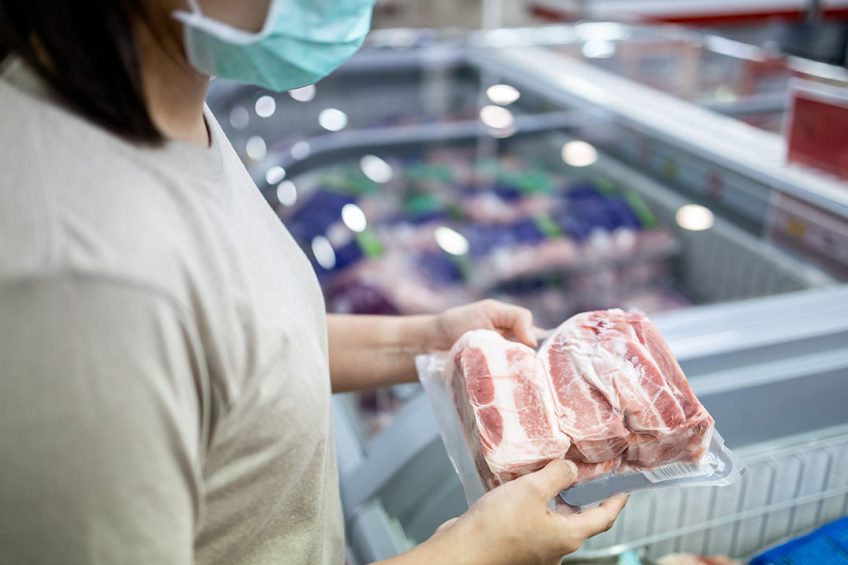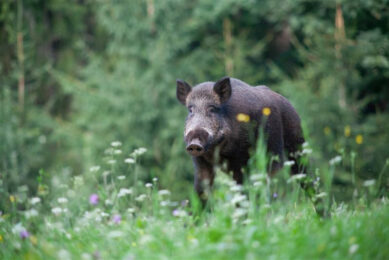Pork demand remains strong despite Covid-19

Despite economic instability and unprecedented obstacles, global demand for pork remains strong, and importers, retailers and restaurateurs have found creative ways to meet consumer demand.
In a recent web conference, Dan Halstrom, US Meat Export Federation (USMEF) president and CEO, said the US is well-positioned to supply that demand, particularly in Asia. According to data from the US Department of Agriculture (USDA) and compiled by USMEF, US pork exports are on the rise.
“We had a record year in 2019 on pork exports,” confirmed Halstrom. “We exported 2,670,000 metric tonnes in 2019, which was growth of 10% over 2018. This represented about $ 7 billion in exports of pork from the US globally last year, which was growth of about 9%.”
In February of this year, US pork exporters posted the 3rd largest month on record. Year-to-date, volume is about 40%, while value is up over 50%, said Halstrom.
Growth related to ASF in China
US exporters owe part of this growth to African Swine Fever (ASF), as its impact diminished herds, particularly in China. Demand, however, has not diminished, despite the impact of Coronavirus 2019 (Covid-19).
Covid-19 situation is fluid and unique
Halstrom described the current Covid-19 situation as both ‘fluid’ and ‘unique’. But looking to Asia, there is hope that business will return to normal. People in Hong Kong, Taiwan and China are just heading back to work, he said, and restaurants are slowly starting to reopen.
Halstrom honed in on specific trend lines in the food service sector. In the US, Covid-19 outbreaks have impacted food service channels significantly. The same situation occurred in Asia, he said. “We saw tremendous decrease in food service business,” he said. “But now it’s starting to rebound with people back in restaurants in places like Hong Kong, China and Taiwan.”

Covid-19 Up-date
What impact is the pandemic having on the global pig sector and how are they dealing with it.
Halstrom added that Korea and Japan, the latter of which is the largest destination for US pork, are still in quarantine. Restaurants in Korea, for the most part, are still closed, he said. But they’ve been like that for a while, so the situation should abate very soon, he added. “We’re hopeful that very soon we’ll start to see some restaurants reopening there,” he said.
Japan – the largest value market for US pork – is a little a little further behind Korea, said Halstrom. But business continues.
Asia’s food service sector shows signs of resilience
Within Asia, the food service sector shows signs of resilience, as it was quick to react to the growing obstacles. In a matter of days, large restaurants, which were capable of seating 2,000+ diners at one time, developed online delivery platforms and partnered with delivery service companies, said Halstrom. Most conducted ‘commonplace’ deliveries, dropping meals off in open, public spaces, rather than delivering directly to homes.

Covid-19 affects also the global swine events.
WPX 2020 got cancelled last week
In China, restaurants are starting to reopen, said Halstrom, revealing trend lines there as well. Those housed in enclosed spaces, such as malls, have been slower to rebound, he said. Some have not reopened at all.
Restaurants that are in more suburban spaces with a little more space, and particularly those with open-air patios, are doing pretty well, said Halstrom. “They’re rebounding relatively quickly,” he said. “I wouldn’t say it’s normal, but the obvious path is on a trend line back to normal.”
While sit-down restaurants in Asia struggled throughout the pandemic, quick-serve restaurants were less impacted, said Halstrom.

Interview: Can Covid-19 transfer to pigs?
Unlikely says this expert
Retail: business boomed in Asia
On the retail side, business boomed in Asia. Costco in Korea, for example, reported record weekly sales several times in the last 3 months.
Business is doing very well in most other national retailers in Asia, as well. E-commerce platforms were well established long before the pandemic struck. Expansion in the past months, though, has been so impressive that it’s overloaded some of the systems. They just can’t handle all the volume, said Halstrom.
Another common outlet for food sales throughout Asia, as well as in Mexico, is the wholesale market or wet market. Wet markets, like farmers’ markets in Europe and North America, provide a range of fresh fruits and vegetables. Today, wet markets in China have evolved into higher quality retail spaces, said Halstrom.
Frozen pork was sold at wet markets
Traditionally, frozen pork was sold in these markets. Domestic fresh meat is their other source of protein. But since ASF decimated Asia’s herds, there has been an extreme shortage of fresh, domestic pork available in wet markets, said Halstrom, who sees this as an opportunity for US pork exporters.
Track the movement of African Swine Fever
For everything you need to know about ASF, from the latest outbreaks to controls stay up to-date…
“This is probably one of the best opportunities I’ve ever seen to introduce imported chilled, vacuum-packed pork from the US into these traditional wholesale wet markets,” he said.
Growth of the convenience store segment
The last segment in Asia that’s evolved greatly in the past 3-4 years is the convenience store segment. Business is booming in this segment, said Halstrom, especially since Covid-19. Convenience stores in Asia are very different than they are in other parts of the world in that the amount of shelf space devoted to perishable food items is much larger. Probably the most popular item is the bento box, said Halstrom. For the most part, the bento box includes a slice of pork, and some rice and vegetables.
“That business is booming,” said Halstrom. “It’s another outlet for people who wanted to eat at home. It’s quick and easy and high quality.”
“The bottom line is that food is a staple; it’s essential,” he continued. “Consumers are still eating all over the world, and pork is the preferred protein in a lot of these countries.”
The US, said Halstrom, has a reputation for producing safe, high quality pork. “I think we are well positioned to fill the void as it relates to demand for pork, globally,” he concluded.











